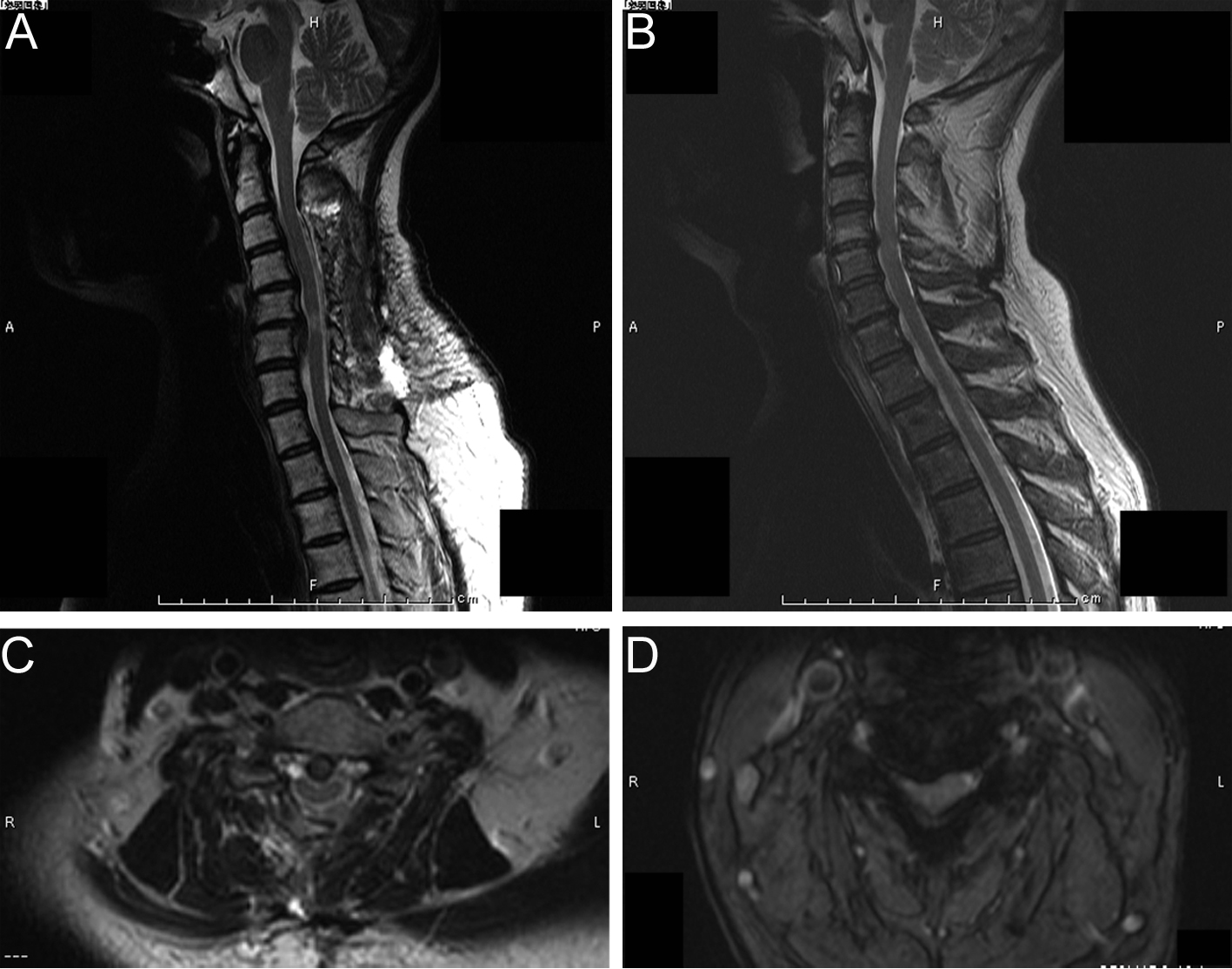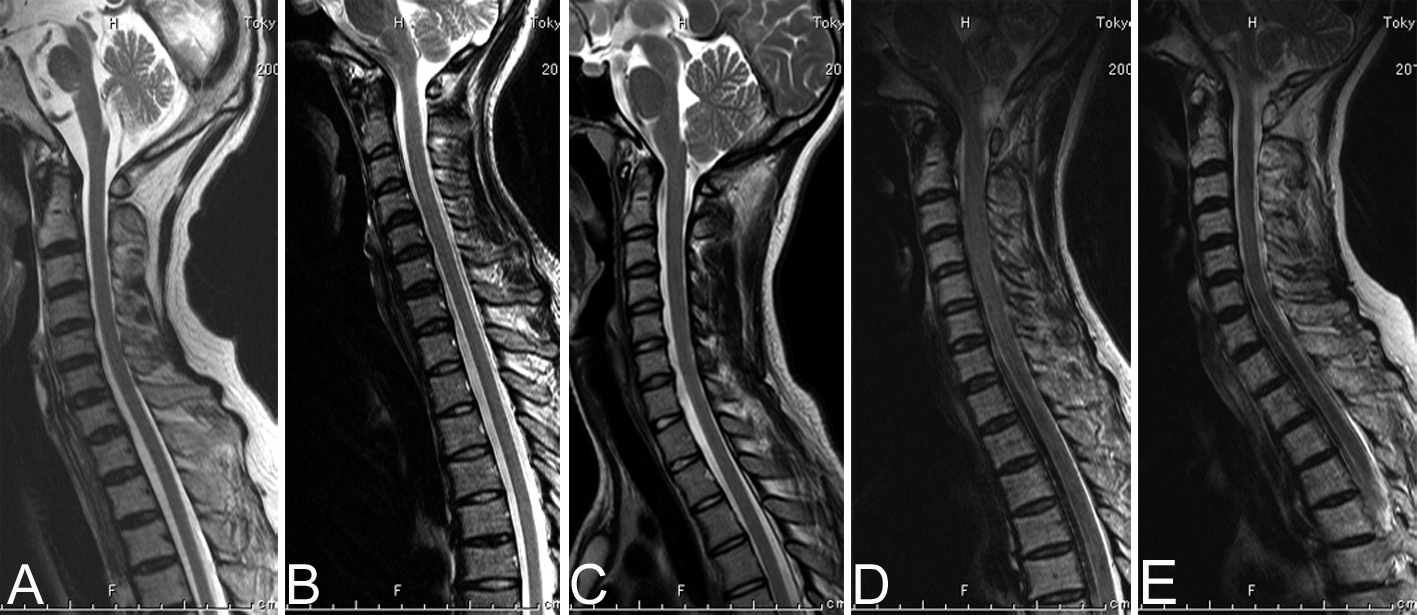
Figure 1. Sagittal and axial magnetic resonance imaging (MRI) findings of typical C5-6 and C4-5 intervertebral level myelopathies. (A) T2-weighted MRI of C5-6 intervertebral level myelopathy. Spinal cord corresponding to C5-6 intervertebral level shows a high intensity area (TR, 2400; TE, 120). (B) T2-weighted MRI of C4-5 intervertebral level myelopathy. Spinal cord corresponding to C4-5 intervertebral level is compressed (TR, 2400; TE, 120). (C) T2-weighted axial MRI corresponding to A (C5-6 intervertebral level). Spinal cord shows boomerang shaped deformity (TR, 2400; TE, 120). (D) T2-weighted axial MRI corresponding to B (C4-5 intervertebral level). Spinal cord shows right side dominant deformity (TR, 2400; TE, 120).
